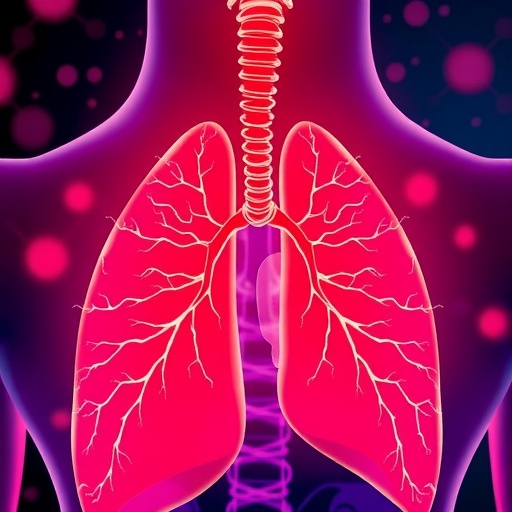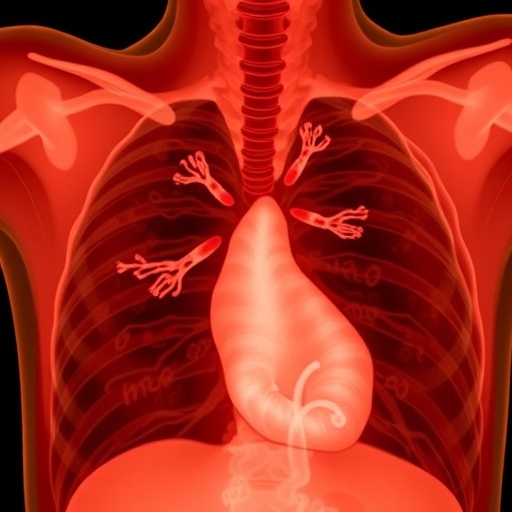
Credit: Copyright 2018 American Association of Neurological Surgeons.
Charlottesville, VA (April 10, 2018). The University of Glasgow's Sir Graham Teasdale, co-creator of the Glasgow Coma Scale, has teamed with Paul M. Brennan and Gordon D. Murray of the University of Edinburgh to create new assessment tools that build on the Glasgow Coma Scale in order to provide greater information on injury severity and prognosis in patients with traumatic brain injury (TBI) while still offering simplicity of use. These tools are described and evaluated in two companion papers published today in the Journal of Neurosurgery.
Background
The Glasgow Coma Scale (GCS) was first introduced in 1974 by Bryan Jennett and Graham Teasdale to assess coma and impaired consciousness. The scale describes variations in three clinical features: the patient's eye, motor, and verbal responses. The authors assigned numerical scores to each feature depending on the quality of the response. GCS total scores (including eye + motor + verbal responses) range from 3 (deep coma) to 15 (full consciousness). The scale is used throughout the world by physicians, nurses, and emergency medical technicians.
Other researchers have designed methods to evaluate patients with TBI and predict outcomes based on a variety of factors, but many of these methods have been complex and have not been readily accepted in the clinical setting. The arrival of a patient with TBI at an emergency department requires rapid injury assessment that is readily communicable to other healthcare workers. The tools offered in these articles provide just that.
The Present Studies
"Simplifying the use of prognostic information in traumatic brain injury. Part 1: The GCS-Pupils score: an extended index of clinical severity"
In this paper, Brennan, Murray, and Teasdale describe the development of the Glasgow Coma Scale-Pupils score (GCS-P), a simple but elegant tool that extends the information collected by the GCS score on the severity of TBI. The authors examined the relationships between GCS scores and pupils' reaction to light as well as the relationships between these factors and patient outcome 6 months after injury. To do this, they examined data from CRASH[1] and IMPACT[2], the two largest databases containing information on individual patients with TBI.
To create the GCS-P, the authors first established a pupil reactivity score, which represents the number of nonreactive pupils (0, 1, or 2). This number is subtracted from the GCS score (3-15), resulting in the GCS-P (1-15).
The authors state that pupil reactivity and the GCS score are the two clinical features that provide the most information about prognosis in head-injured patients. Combining the two together provides greater information about injury severity and prognosis than using the GCS score alone, particularly in cases of severe head injury (GCS scores 3-8), in which nonreactive pupils are more common.
Brennan, Murray, and Teasdale point out that adoption of assessment tools works better if the tools are simple and user friendly. Nevertheless, they examined other, more complicated models of combining the GCS score and pupil reactivity to see if those models yielded more predictive information about outcomes in patients with TBI. The authors found that the simple arithmetically derived GCS-P performed almost as well as other, more complex methods. Plus it has the advantage of being simple to apply and easy to communicate to others.
"Simplifying the use of prognostic information in traumatic brain injury. Part 2: Graphical presentation of possibilities"
In this paper, Murray, Brennan, and Teasdale show how other factors can be added to the Glasgow Coma Scale-Pupils score (GCS-P) to further increase predictive information on patient outcome. The clinical features comprising the Glasgow Coma Scale, pupil reactivity, patient age, and computed tomography (CT) findings have all separately been found to have bearing on patient outcome after neurological trauma. These factors have been validated in earlier studies to be the most important prognostic characteristics in head-injured patients.
Again the authors sought a way to combine patient features into a more comprehensive assessment tool that would be simple to apply and whose information yield could be easily communicated to others. Using CRASH and IMPACT data, Murray, Brennan, and Teasdale combined the patient's early GCS score, pupil reactivity, age, and CT findings, and developed a series of graphic representations that clearly display the risks of death and probabilities of favorable outcomes in patients with brain injury.
First, the authors observed the additive effect on outcome that occurs when age is added to the patient's admission GCS-P. The risk of death after TBI increases as patient age advances, and at all ages the risk of death increases as the GCS-P decreases. The probability of favorable outcome is greater in younger patients and in patients with higher GCS-Ps. The authors created two prediction charts based on the GCS-P and patient age stratified into 5-year increments (GCS-PA charts): one chart clearly shows risks of death and the other chart probabilities of favorable outcomes in patients 6 months after TBI.
Following this, the authors added information obtained from CT scans when available. They were able to simplify three different abnormal CT findings into scores based solely on the number of abnormalities. They then created two sets of three predictive charts based on the GCS-P plus patient age and number of CT abnormalities (GCS-PA CT charts). One set of charts follows probabilities of death 6 months after injury, while the other set follows probabilities of favorable outcome at the same time point. These charts can be used by clinicians in decision making and in communicating predictive information to other clinicians, patients, and caregivers.
The authors state that these methods of assessing injury and potential outcomes in patients with TBI should not be used alone when managing an individual case. Individual patients all have unique characteristics, which together influence outcome. Nevertheless, the GCS-P and predictive charts that also include age and CT findings provide important objective information that is simple to apply and can be used to assist decision making and communicate risks to others.
When asked about these important studies, the authors responded, "Decisions about patient care in the immediate aftermath of a head injury are influenced by physician perceptions of the patient's likely outcome, so it's important that assumptions that underlie these decisions are correct. Working together between Glasgow and Edinburgh, we have developed the GCS-P and associated prognostic charts. These simple and easy to use tools provide reliable estimates of outcomes at 6 months and will support clinician decision making in neurotrauma."
###
[1] Corticosteroid Randomisation After Significant Head Injury.
[2] International Mission for Prognosis and Clinical Trials in Traumatic Brain Injury
Brennan PM, Murray GD, Teasdale GM: Simplifying the use of prognostic information in traumatic brain injury. Part 1: The GCS-Pupils score: an extended index of clinical severity. Journal of Neurosurgery, published ahead of print April 10, 2018. DOI: 10.3171/2017.12.JNS172780.
Murray GD, Brennan PM, Teasdale GM: Simplifying the use of prognostic information in traumatic brain injury. Part 2: Graphical presentation of possibilities. Journal of Neurosurgery, published ahead of print April 10, 2018. DOI: 10.3171/2017.12.JNS172782.
Disclosure: The authors report no conflict of interest concerning the materials or methods used in these two studies or the findings specified in these papers.
For additional information, please contact: Ms. Jo Ann M. Eliason, Communications Manager, Journal of Neurosurgery Publishing Group, One Morton Drive, Suite 200, Charlottesville, VA 22903. Email: [email protected]; Phone: 434-982-1209.
For 74 years, the Journal of Neurosurgery has been recognized by neurosurgeons and other medical specialists the world over for its authoritative clinical articles, cutting-edge laboratory research papers, renowned case reports, expert technical notes, and more. Each article is rigorously peer reviewed. The Journal of Neurosurgery is published monthly by the JNS Publishing Group, the scholarly journal division of the American Association of Neurological Surgeons. Other peer-reviewed journals published by the JNS Publishing Group each month include Neurosurgical Focus, the Journal of Neurosurgery: Spine, and the Journal of Neurosurgery: Pediatrics. All four journals can be accessed at http://www.thejns.org.
Founded in 1931 as the Harvey Cushing Society, the American Association of Neurological Surgeons (AANS) is a scientific and educational association with more than 10,000 members worldwide. The AANS is dedicated to advancing the specialty of neurological surgery in order to provide the highest quality of neurosurgical care to the public. All active members of the AANS are certified by the American Board of Neurological Surgery, the Royal College of Physicians and Surgeons (Neurosurgery) of Canada or the Mexican Council of Neurological Surgery, AC. Neurological surgery is the medical specialty concerned with the prevention, diagnosis, treatment and rehabilitation of disorders that affect the entire nervous system including the brain, spinal column, spinal cord, and peripheral nerves. For more information, visit http://www.AANS.org.
Media Contact
Jo Ann Eliason
[email protected]
434-982-1209
@thejns
http://thejns.org/
Related Journal Article
http://dx.doi.org/10.3171/2017.12.JNS172780




